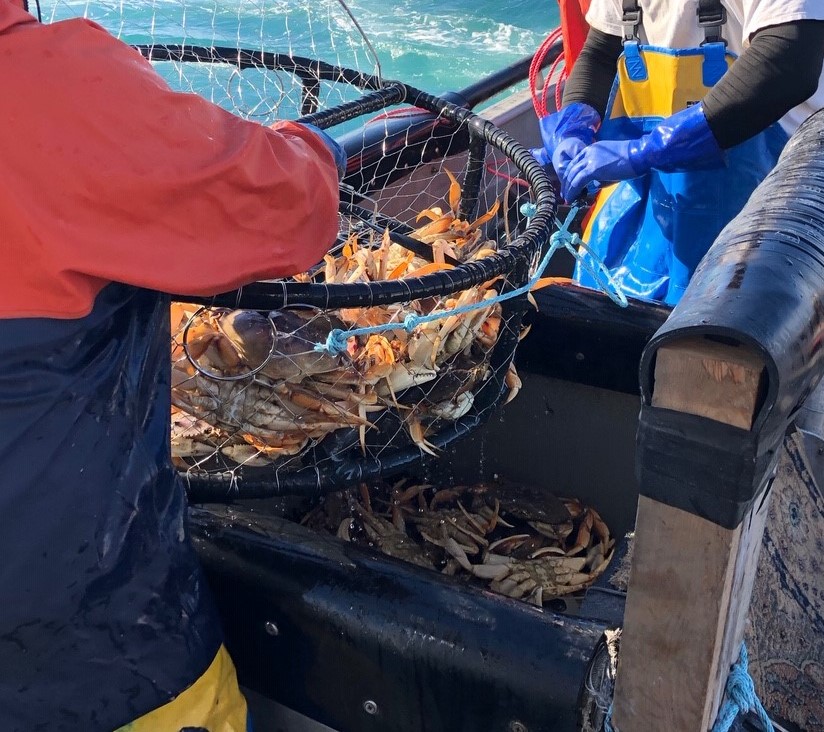California’s crab fleet started setting half of its Dungeness gear at 8:01 a.m. Dec. 28, preparing for a New Year's Eve season opener after six weeks of postponement while humpback whales were on the move.
The state Department of Fish and Wildlife imposed the 50 percent trap reduction as an additional caution for avoiding gear entanglements when the fishery opened at 12:01 a.m. Saturday. As has been typical during the last four years, the season opener was delayed – three times in fall 2022 – as state officials tracked whale movements and assessed potential danger.
The state’s Risk Assessment and Mitigation Program (RAMP) regulations, set in 2020, require restrictions on crab fishing when whales are on the move in fishing areas and the risk of entanglement is high.
Any commercial Dungeness vessel fishing in or transiting Fishing Zones 3-6 off central and southern California, “regardless of fishing location, is subject to the 50 percent reduction and must have at least half of their valid buoy tags for the current fishing season onboard and available for inspection by CDFW at all times until the trap reduction is lifted,” according to the agency.
The season for the northern Fishing Zones 1 and 2 off Mendocino, Humboldt and Del Norte counties had also been delayed due to poor meat quality results, but the latest tests show crabs are ready for market.
“Our department appreciates the ongoing partnership and input from the Dungeness Crab Fishing Gear Working Group and the numerous researchers and federal agency partners that inform the Risk Assessment Mitigation Program,” said department director Charlton H. Bonham.
Bonham said the agency has conducted four risk assessments this season, and anticipates results from the next review Jan. 18. That could determine if the 50 percent gear restriction can be lifted.
State officials say whales are still active in Fishing Zone 3, particularly in waters around Point Reyes and the Farallon Islands. A fleet advisory is telling commercial and recreational crabbers to avoid setting gear in areas where whales are transiting or foraging.







